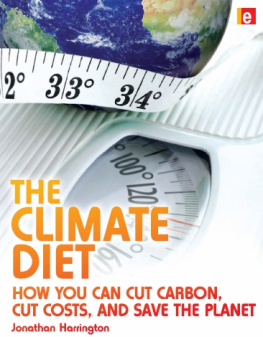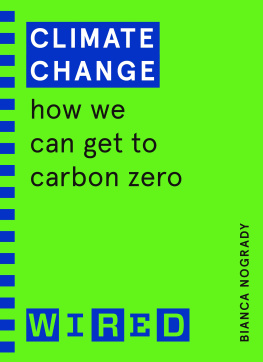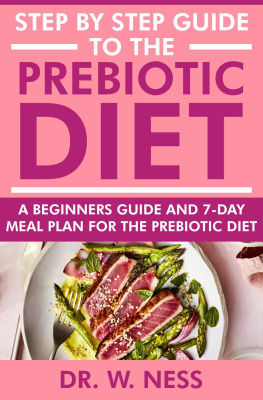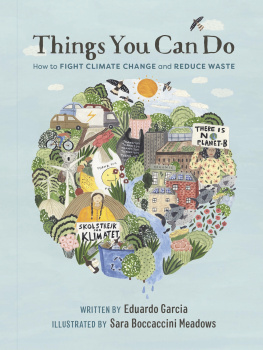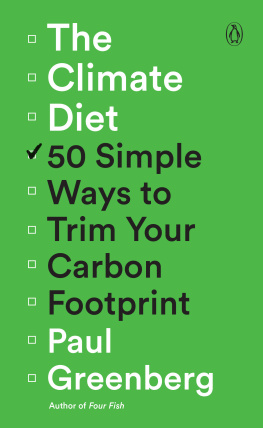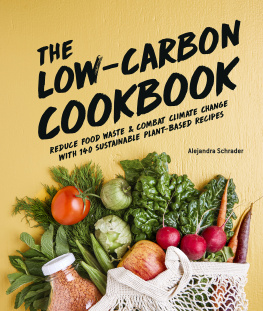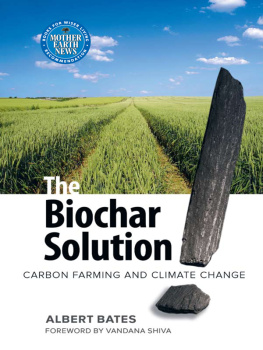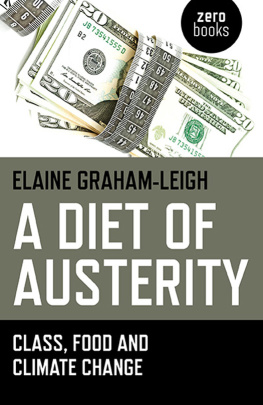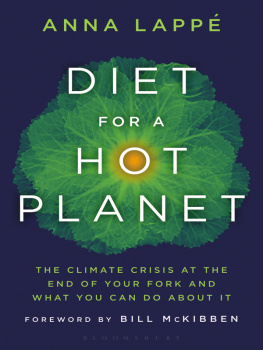
The Climate Diet
The Climate Diet
How You Can Cut Carbon, Cut Costs, and Save the Planet
Jonathan Harrington
publishing for a sustainable future
London Sterling, VA
First Published by Earthscan in the UK and USA in 2008
Copyright Jonathan Henry Harrington, 2008
All Rights Reserved. No part of this book may be used or reproduced in any mannerwhatsoever without written permission from the publisher except in the case of briefquotations embodied in critical articles or reviews.
ISBN: 978-1-84407-533-1
Typeset by Safehouse Creative
Printed and bound by The Maple-Vail Book Manufacturing Group, York,Pennsylvania, USA
Illustrations by Dan Bramall
Cover design by Rob Watts
For a full list of publications please contact:
Earthscan
Dunstan House, 14A St Cross Street,London EC1N 8XA
Tel: +44 (0)20 7841 1930
Fax: +44 (0)20 7242 1474
Email: earthinfo@earthscan.co.ukWeb: www.earthscan.co.uk
22883 Quicksilver Drive, Sterling, VA 20166-2012, USA
Earthscan publishes in association with the International Institute for Environmentand Development
A catalog record for this book is available from the British Library.
Library of Congress Cataloging-in-Publication Data
Harrington, Jonathan Henry, 1964
The climate diet : how you can cut carbon, cut costs and save the planet /Jonathan Harrington.
p. cm.
Includes bibliographical references and index.ISBN-13: 978-1-84407-533-1 (pbk.)
1. Climatic changes. 2. Global warmingPrevention. 3. Carbon dioxideEnvironmental aspects. 4. Greenhouse gasesEnvironmental apsects. I.Title.
QC981.8.C5H2567 2008640dc22
2008003018
This book has been printed on paper that is 30% recycled from post-consumer wasteusing vegetable-based inks.
For Kela
So she too may have an opportunity to enjoy the rich bounty of our Mother Earth
Contents
List of Acronyms and Abbreviations viiList of Tables xAcknowledgments xiiPreface xiii
Chapter One Cool Strategies for a Warming World
Chapter Two Ten Good Reasons to Go On a Climate Diet
Chapter Three Going for the Gold: The Nuts and Volts of Climate Diet Success
Chapter Four Less Is More: Creating aClimate Diet Home
Chapter Five Finding the Right Balance: Heating, Cooling, and Outside Spaces
Chapter Six Shopping, Eating, Recycling, and More
Chapter Seven Hit the Road the Climatewise Way
Chapter Eight Community Strategies for a Better Climate
Chapter Nine Putting It All Together: Your Climate Diet Results
Chapter Ten Epilogue: Our LifestyleHer Life
Appendices
Appendix A More on the Science of Climate Change Appendix B Sample Climate Diet Worksheet Appendix C International Energy and Price Data for Selected Countries (2007)
Appendix D Energy and Emissions Data by State/Province (USA, Canada, and Australia, 2005)
Appendix E(a)- E(e) Detailed Energy-Use Characteristics by Product/Item
Appendix F CO2e Emissions Associated with Farming and Animal Husbandry
References | About the Author | Index
List of Acronyms
and Abbreviations
ATV all terrain vehicle
bpd barrels per day
Btu British thermal unit
C Celsius
CFL compact fluorescent lampCH4 methane
cm centimeter
CO2 carbon dioxide
CO2e carbon dioxide equivalentcu ft cubic feet
E-85 85% ethanol/15% gasoline fuel
EC European Commission
EER energy-efficient ratio
EIA Energy Information Administration
EPA Environmental Protection Agency (USA)
EU European Union
F Fahrenheit
g gram
gal gallon
GHG greenhouse gas
gpm gallons per minute
hp horsepower
IEA International Energy Agency
IPCC Intergovernmental Panel on Climate Change
IISD International Institute for Sustainable Developmentkg kilogram
km kilometer
km/h kilometers per hour
kWh kilowatt hour
lb pound/pounds (U.S.)
LCD liquid crystal display
LED light-emitting diode
LEED Leadership in Energy and Environmental DesignL/m liter per minute
m meter
List of Acronyms and Abbreviations
IX
mi mile
mpg miles per gallonmph miles per hourN2O nitrous oxide
NOAA National Oceanic and Atmospheric AdministrationPC per capita
ppm parts per million
SEER seasonal energy-efficient ratio
sq ft square feet
sq m square meters
TCO total cost of ownership
UK United Kingdom
U.S. United States
W watt
List of Tables
3.1 Lightbulb Example 33
3.2 Summary of the Information You Need for Your Climate Diet 34
3.3 Mercer Island Example 34
3.4 Sample GHG Factor and Electricity Cost Data for Selected Countries 36
4.1 Bedroom 1/Kids Room 46
4.2 Bedroom 2/Master Suite 47
4.3 Bedroom 3/Home Office 49
4.4 Living/Dining Zone 52
4.5 Kitchen Zone 54
4.6 Bathrooms Zone 58
4.7 Laundry/Utility Zone 61
5.1 International City Climate Comparisons 70
5.2 Heating Zone Options 72
5.3 Air-Conditioning Zone 74
5.4 Yard Zone 77
6.1 Embedded Fossil Fuels: A Mercer Island
Example 86
6.2 Food Consumption and GHG Emissions 89
6.3 Tale of Two Meals 90
6.4 Waste Disposal and Recycling 92
6.5 What You Can Compost 94
7.1 Comparative Financial and Environmental
Costs of Private Vehicles (2007) 108
7.2 True Cost to Own a 2007 Volvo 110
7.3a Transportation Zone Worksheet (U.S. miles) 113
7.3b Transportation Zone Worksheet (metric) 114
7.4 Environmental Effects of Air Travel 116
8.1 List of Major Environmental Organizations 128
8.2 Weekly Per Capita Gasoline and Diesel Use
in the Northwest: 1990 and 2004 131
8.3 Urban Sprawl in Selected Cities: 1990 and 2000 131
9.1 How Did You Do? CO2 Emissions 144
9.2 How Did You Do? Cost 145
List of Tables
XI
Appendix A.1 Projected Temperature Changes for
Various IPCC Scenarios 162Appendix A.2 Temperature Variations 1990s and 2090s
in Selected North American Cities 162Appendix B.1 Currentwhere you are 164Appendix B.2 Futurewhere you want to be 165Appendix C International Energy and Price Data:
Selected Countries (2007) 166Appendix D Energy Data by State/Province
(USA, Canada, and Australia) 167Appendix E(a) Detailed Energy-Use Characteristics by
Product/Item 169Appendix E(b) Detailed Energy-Use Characteristics by
Product/Item 170Appendix E(c) Detailed Energy-Use Characteristics by
Product/Item 171Appendix E(d) Detailed Energy-Use Characteristics by
Product/Item 172Appendix E(e) Detailed Energy-Use Characteristics by
Product/Item 173Appendix F CO2e Emissions Associated with Farming
and Animal Husbandry 174
Acknowledgments
First of all, I would like to thank my aunt and uncle, Belden and LisaPaulson, for allowing me to vicariously participate in their decades-long crusade to save the planet. Their hard work and vision hasaffected the lives of thousands of people. I would like to thank myparents, Mary Paulson and Gordon Harrington, for giving me the
gift of education that has allowed me to contribute to public debatesabout environmental politics and policy. Special thanks to my wife,Kathy, who taught me to walk more softly on the planet, throughactions not words, and to rein in the disease of affluenza that infectsmodern society. I certainly could not have reached this point withoutmy editor, Rob West, who believed in this project from beginning toend and pushed me to persevere though months of rewrites. Manypeople and organizations provided helpful comments and materialassistance during the course of this project, including the Wunderkidsat Verve Editorial, Northwest Avalanche Center, Ted and Bunny Belden,Stylus Publishing marketing staff, Mary Ann Acosta, the University ofWashington Puget Sound Action Team staff, Dr. Ken Stiles, Dr. PaulHarris, David Lagerman, Waverly Fitzgerald, and all of my global-warming-doubting graduate students who challenged me to defend
Next page
